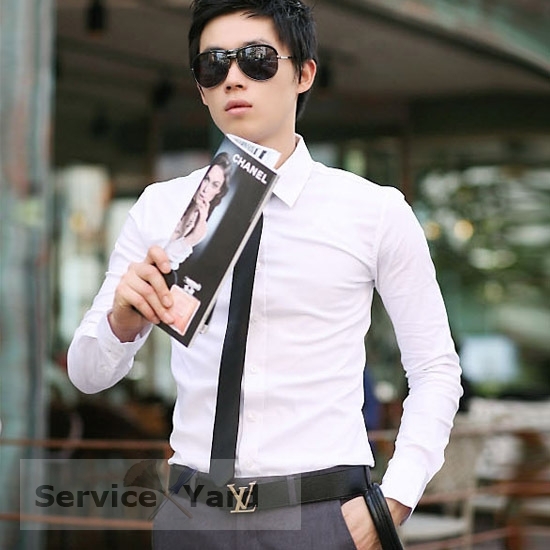As a rule, plaid tie spokes can not afford beginning craftswomen. By creating such a product, you want to put a lot of work and patience. But the result will not take long. The result is a blanket, warming family members in the long winter evenings. It can be put on a chair or sofa, adding to the interior, creating a cozy atmosphere. If you are new to knitting, and is the first work, choose to study the simplest version of plaid sectional patterns. It is quite easy and will help to get the hand.

Plaid with raised circles, associated in the art of knitting sectional
Content
-
1 The best tool
- 1.1 Hook
- 1.2 spokes
- 2 sectional patterns
-
3 plaid zigzag
- 3.1 Work description
- 4 voluminous leaves
- 5 of squares
- 6 binding
- 7 Care
- 8 conclusion
- 9 Video: Simple plaid spokes of a thick yarn
- 10 50 ideas for knitting beautiful and comfortable rugs spoke:
The best tool
needlewoman are typically used for knitting one of the two instruments.
- Spokes.
- Hook.
Of course, there is a knitting needle. However, this technique has not gained wide acceptance due to the high complexity of execution.
Hook

Crochet hooks come in different sizes and shapes
Knit this wonderful tool is very simple, so it is perfect for beginners. They are a variety of patterns. It is small, compact and does not take up much space.
The main disadvantage is the ribbing and stiffness products. A number of loops are not tight, creating a simple thing takes a long time.
spokes

Knitting needles of different thickness and length
Suit more experienced craftswomen. Knit them is difficult, but comparing with a hook, the process of creating air patterns becomes more complicated. They allow you to knit a lot of work in a short time (experienced knitters can do up to four loops per second). Things get soft, smooth (the loops regardless of tension will be equal to each other), pleasant to the skin.
There are several types of spokes.
- Open.

Open or hosiery knitting needles
Sold set of five pieces. Relatively short, have a two-way sharpening. The main purpose of this knitting circle. Suitable for the manufacture of gloves and socks.
- Closed.

Straight closed knitting needles
Sold a pair. The longest of all the spokes. They are comfortable knit long, straight stuff, such as a scarf or sweater. They are often used to create a rug.
- Ring.

Circular or ring knitting needles
Are two short rods connected thin fishing line. They are versatile, can replace any knitting tools. The disadvantages include:
- the need to accurately select the length of fishing line;
- complicated knitting technique.
Deciding plaid tie spokes, use closed. They will prevent slipping the loops on the back side and allow to create a variety of reasons. In addition, they are easier to change the colors of yarn.
sectional patterns
The easiest of all kinds, this sectional plaid patterns. A common variation is the "grain".

Driving a simple pattern "Grain"

Practical plaid spokes connected from several colors of yarn simple pattern
Before its creation, mentally mark your blanket into equal portions, the size of 20 to 20 loops. Alternate squares of a checkerboard pattern using a purl and facial loops to form a pattern.

Driving a simple pattern "Checkerboard"
To tie a blanket using the spokes do not need to be an experienced skilled worker. You can make different colored sections, using a homogeneous viscous if desired. There is no limitation squares, change them on your own.

Beautiful children's plaid checkered pattern tie, even a beginner knitter
To choose the right size, type and twenty loops, measure their ruler. The desired length and width, divide the resulting number on. So it calculated how much you need to dial the loops in the front row.

Calculation of the loops to knitting
plaid zigzag

Zigzag pattern for plaid
Stripes plaid knitted gradually without the need for stitching. Each strip can be bred from a different yarn, thus creating a special pattern. Skilled workers with experience using the remnants of yarn other works.

Scheme zigzag pattern
Work description

Plaid Zigzag spokes, connected from 10 stitches
Type in the spokes of 10 loops, knit ten rows, always subtracting one loop to the left and one on the right. Repeat this step, but adding to the left, and subtracting the right. So you get irregular stripes, similar to lightning. Sami zigzags can go diagonally or vertically (depending on your preference). Periodically recalculates the number of stitches on the needles. the same number (in this case 10) should always remain.

Beautiful zigzag knitted easily and look beautiful
Having reached the desired length, close the strip at nine loops, one must remain on needle. Turn next masterpiece 180 degrees and similarly knit next zigzag bonding with the previous one. Tying another blanket using needles, wash it with warm water.
voluminous leaves
Before you begin, you must explore the "pearl" pattern. He is, along with rezinochkoy and pigtail, extremely popular element used in many studies.

Scheme pearl needles pattern
Tie a series of alternating loops of the right and wrong, and should be done as well, but in a staggered manner. The result is a "pearl" pattern. It is worth noting some of the masters call it the "seeds", "fish scales" or "spider".
After studying the new element, start knitting needles plaid.
Dial 112 loops. Then tie 4 rows, using a "pearl" pattern, then proceed to the motive leaves, leaving the node 4 on each side.

The scheme of knitting pattern "leaves"
Provyazyvaya "leaves", you will need to divide the remaining fabric into 7 equal portions of 16 loops (for the convenience of using a pin).
1st row: 2 vmese. obverse. Left, facial 8. 1 sc, 4 obverse., 2 vmese. obverse. the right;
2 number 2 vmese. obverse. Left, 3 facial. 1 sc, 3 facial., 8, p. cross over to the right;
3rd row: 2 vmese. obverse. Left, 6 obverse. 1 sc, 4 obverse. 1 sc, 2 obverse., 2 vmese. obverse. the right;
Row 4: 2 vmese. obverse. Left, facial 1, 1 sc, 6 obverse. 1 sc, 5 facial, 2 vmese. obverse. right.
So go on until you reach the desired length. Finish plaid four rows of "cobwebs", replaced, cut the thread.

Beautiful gray plaid leaves associated spokes
of squares

Blankets squares of different color, knitted on the angle
Perhaps the most popular type of plaid. The main advantage is that it is composed of small squares, sewn with thread to each other. That is, it is possible to knit while sitting in traffic and visitors. Compared with conventional methods of knitting small sites do not require a lot of time, space and effort.

Plaid colored squares spokes can be linked from the remnants of yarn
You will need a large number of different yarns. Use the remnants of previous products. Be creative. The color scale, shape, pattern and size of the rug is not particularly limited. You can choose several colors and combined to make a single composition. But no ban to take yarn random order and create unique colorful designs, complemented by various elements.

Plaid squares made in different techniques of knitting yarn of different colors
Another advantage is the ability at any time to alter the squares in a different order, or replace them with new ones.
Single crochet scheme does not exist, try to invent a unique canvas.

Beautiful children's plaid with simple and delicate squares and squares with a pattern
binding

Simple harness hook will add a finished look ready plaid

An interesting way to tie the edges of the product - Sink
Finished blanket with needles, it is desirable to tie the hook. This is necessary to increase the service life.
For this you need a short hook (3 mm) and a yarn, combined with the web.
1st row: tie the perimeter of the product item. b. n .;
2 series: alternate 2 abstentions. p., 3 tbsp. b. n .;
3 range: in the loops formed by the air ring knit 5, Art. n., then fasten 1 tbsp. n. (Continue to the end of the series).

Beautiful finish with small pompons edge

A simple but effective way to trim the edges - beads
Care
To plaid retained the original appearance, the following tips.
- Keep knitting dense piles, otherwise yarn will wear.
- Before you send a blanket in the closet do not forget to wash it. Sweat and dirt lures mol.
- Put in the cupboard by means of moths.
- Always wash knitted things manually. Washing machine damages the products (stretches, confuses wool).
- Wash be warm, but not hot water.
- Do not dry the rug before the batteries. It is better to spread it on a flat surface and leave it to dry completely.
conclusion
As you can see knitting needles plaid, although difficult, but feasible task. Patterns and types of drawing countless. You can always show imagination and create something new. Obtained things will be a wonderful gift to your friends and relatives. Motley, delicate rug that will suit to the nursery, and the plain, made a zigzag, will fit into any interior of a modern apartment.
Video: Simple plaid spokes of a thick yarn
50 ideas for knitting beautiful and comfortable rugs spoke:





















































